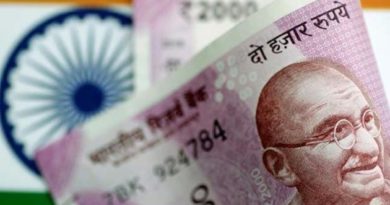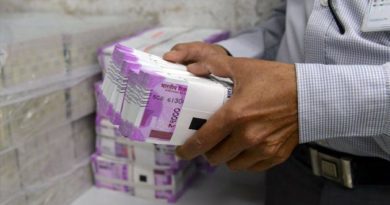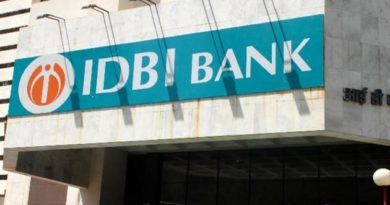PROJECT ‘SASHAKT’
Background :
During last few years, Reserve Bank of India (RBI) has been coming out with various initiatives like Scheme for Sustainable Structuring for Stressed Assets (S4A), Strategic Debt Restructuring (SDR) and comprehensive framework for revitalising distressed assets. Notwithstanding all these initiatives, the Non Performing Assets (NPAs) of all the public sector banks have been mounting constantly.
As on 31th March Gross NPA (Rs. Crores)
2016 5,95,636
2017 7,11,436
2018 10,24,856
NPAs or stressed assets became such a menace that RBI asked 11 public sector banks not to engage in large lending activities under what it called the Prompt Corrective Action (CPA) framework.
Last year, RBI identified 40 largest stressed assets and asked the banks to initiate resolution process under Insolvency & Bankruptcy Code, 2016 (IBC 2016). IBC has succeeded in initiation of resolution process of stressed assets in some cases, particularly Bhushan Steel and Electrosteel Steels. It has created a ray of hope for banks. But, many more cases are still in pipeline and may take some time.
In Feb 2018, RBI came out with a revised framework for resolution of stressed assets, where banks were instructed to classify any account that fails to service in its debt obligation even for a day as NPA. The central bank also repealed all the extant debt resolution mechanisms like Scheme for Sustainable Structuring for Stressed Assets (S4A), Strategic Debt Restructuring (SDR), Corporate Debt Restructuring (CDR) and Joint Lenders Forum (JLF).
The recent RBI Financial Stability Report (FSR) has declared that Gross Non-Performing Asset (NPA) ratio of banks will rise from 11.6% as on March 2018 to 12.2% by March 2019. This has increased the concerns over NPAs of the banks.
Sunil Mehta Committee :
Under the above disturbing scenario of exponential rise in bad loans in banking industry, on 8th June 2018, Central Government set up a three member committee under the Chairmanship of PNB Non-Executive Chairman, Sunil Mehta, including SBI Chairman, Rajnish Kumar and BOB Chairman, B S Jayakumar to draw up some strategies to resolve NPA problem. The committee has come out with a five pronged NPA resolution strategy called, Project ‘Sashakt’.
Project ‘SASHAKT’ :
‘SASHAKT’ stands for strengthening and the sole idea behind project ‘Sashakt’ is to strengthen the credit capacity, credit culture and portfolio of public sector banks. It is a five pronged framework which aims at rescuing bad assets and restoring lenders to good health so that they can focus on credit growth.
Objectives :
The main objective of Project ‘Sashakt’ is to resolve the problem of stressed assets of public sector banks. It has also been aimed on following points :
- To create a resolution process that does not adversely impact the financial structures in the country.
- To ensure that no job loss and no additional financial stress should occur.
- Recommendations should be completely compliant to the existing regulations.
- To create robust governance and credit structure.
Five Approaches under Project ‘SASHAKT’ :
Under project ‘Sashakt’, Sunil Mehta committee has recommended five approaches to tackle the NPAs. It sketches the resolution of bad loans depending on their size.
I) SME Resolution Approach (SRA) :
The Committee has recommended, considering the importance of the Small and Medium Enterprises (SME) sector, that banks should create an intra bank focused vertical for management of stressed assets for priority resolution of SMEs with loans upto Rs. 50 crores. It has also suggested a steering committee within the bank to devise a template driven resolution approach to resolve such assets in time bound manner within 90 days. Banks should define SOP for resolution of such stressed assets in non discretionary and non discriminatory manner.
II) Bank Led Resolution Approach (BLRA) :
The Bank Led Resolution Approach (BLRA) is to be dealt with assets of size from Rs. 50 crores to Rs. 500 crores, which are under Consortium or Multi Banking Arrangement (MBA) lending. BLRA suggest that lead bank or larger exposure lenders should prepare and implement a resolution plan for stressed assets within 180 days. For this purpose, committee has emphasized upon Inter Creditor Agreement (ICA). All banks should enter into ICA, authorizing the lead bank or 66% & above value lenders to go for resolution plan strictly within given time limit. All bank boards are already in process to sign the Inter Creditor Agreement (ICA).
The basic features of BLRA are as under :
a) Inter Credit Agreement (ICA)
ICA stipulates that lenders having 66% or two thirds exposure will have the decision taking authority. If lenders of 66% of value agree to a resolution plan, it would be binding on all lenders. The resolution plan would be submitted to an overseeing committee comprising experts from the banking industry.
Inter Creditor issues have been a big challenge in resolution process. In many cases, lenders fight against each other more than with the defaulter. They try to undercut each other, by which only defaulter gets benefited. ICA is a solution to this problem. The ICA framework will envisage the effective communication among consortium lenders. It will ensure that there is good communication amongst banks and if anyone has a difference, then they will resolve it among themselves. The agreement will be a legal document and be enforceable in any court of law.
b) Lead Bank or 66% Value Lenders
Under ICA, the lead bank or 66% value lenders will prepare a resolution plan in consultation with empanelling specialists and other industry experts for an operational turnaround of the assets. Lead Bank will also be responsible to execute the plan. In case lead bank is unable to complete the resolution process within 180 days, such problematic assets would be referred to NCLT under IBC.
The lead bank has the right, but not the obligation, to arrange the buyout of the loan facilities at a value that is equal to 85% of the liquidation or the resolution value – whichever is lower.
c) Dissenting Creditors
Under ICA, the dissenting creditors will have the option to sell their loans to other lenders at a discount of 15% to the liquidation value, or buy the entire portfolio paying 125% of the value agreed under the debt resolution plan by other lenders.
If the lead bank does not arrange for a buyout, the dissenting lenders shall have the right, but not the obligation, to arrange for buyout of the facilities of all the other lenders at a value that is equal to 125% of the liquidation value or the resolution value – whichever is higher.
d) Standstill Clause
Under ICA, there is a Standstill Clause, which restricts all lenders from enforcing any legal action against the borrower for recovery of dues during 180 days of resolution. Lenders will also be barred from transferring or assigning their loans to anyone except a bank or finance company. It will prohibit dissenting creditors from making an easy exit.
III) Asset Management Company (AMC) / Alternative Investment Fund (AIF) Resolution Led Approach (AMC/ AIF LRA):
The Committee has suggested to set up of an independent Asset Management Company (AMC) by public sector banks for resolution or to turn around of assets of above Rs. 500 crores. The AMC will be set and run without any government involvement and in harmony with all existing laws. It will function as an adjunct to the Insolvency & Bankruptcy Code (IBC) process. It will buy or bid for stressed assets put on sale under any resolution plan.
The Committee has also recommended setting up of an Alternative Investment Fund (AIF), which would raise funds from institutional investors to back the AMC. The AIF will be set up under Category 2 of Securities & Exchange Board of India (SEBI) guidelines, which includes private equity funds. Banks may also invest in AIF.
Banks plan to seek dispensation from risk weightage norms and capital required by banks to hold AIF units. It should be as per the rating issued by CRAs.
Banks also plan to seek relaxation in regulatory norms (of holding maximum 51%) from SEBI for higher holding limit in listed securities in takeover of stressed assets under a bid.
IV) IBC / NCLT Approach :
This is meant for all those stressed assets which have been already filed with NCLT as well as any new stressed assets or accounts which are not resolved by any resolution approach above.
V) Asset Trading Platform (ATP) Resolution Approach (ATPRA) :
The committee has also suggested an Asset Trading Platform (ATP) for both performing and non performing assets. ATP will allow banks to swap their assets, non-performing as well as performing, to other banks. With ATP, banks will be able to sell or buy bundle of assets or portfolio i.e. housing loan, priority sector lending, agriculture, SME etc after rated by CRAs at suitable market price. It will help price discovery for assets and enhance liquidity for banks. It will create a ready secondary market for performing assets and will provide early exit opportunities to balance exposure to a particular sector.
The idea behind this initiative is portfolio rationalization of the banks. Under portfolio re-orientation, banks will be identified for specific segment or sector or product as per their size and area of specialisation. In view of the committee, some of the public sector banks should become ‘Money Centre Banks’, which will lend to large corporate, government and other banks. Other banks can become ‘Niche Banks’, which will focus on specific niches in the retail, SME, agriculture etc.
It will be too early to comment of merits and demerits of the project. However, the suggestions of Sunil Mehta Committee and all five approaches under Project ‘Sashakt’ have been deliberated with lot of enthusiasm and ambitions. It is expected to resolve the problem of stressed assets and bring back the banks’ focus on credit growth and lending to good borrowers. It should make operational turnaround of stressed assets and retain its value for economic and developmental benefits. It should also prevent job losses from foreclosures and create additional employment by reviving business.
Some of the suggestions may seem to be reformation of earlier or existing practices. But the sole purpose of all efforts and recommendations is to develop and enhance self capabilities of banks to resolve stressed assets in quicker time bound manner other than IBC process. It provides breather to both banks and promoters from the tough IBC process. It will reduce flow of cases and pendency at NCLT.
Innovative ideas of project ‘Sashakt’ may turn out to be a game changer depending on lots of factors. For instance, bank level settlements of stressed assets under SRA may be effective if branch or competent authority is empowered to accept high haircuts. Unlike OTS, the ability to accept haircuts at the initial stage may bring better recovery than lesser recovery after long legal battle. Likewise, ICA now with more enforceability will definitely be taking all the banks on same boat and be accelerating resolution of stressed assets. Similarly, AMC / AIF will be a market maker if succeeds in attracting big investors having deep pockets, adequate risk appetite and risk capital available with global distressed funds. It may really help banks in consolidation of stressed assets, freeing up management bandwidth to focus on credit growth.
However, the time bound resolution within 90 days or 180 days needs rigorous enforcement otherwise would only provide buffer to defaulting borrowers.
The success or failure of the project ‘Sashakt’ is still to be seen in coming days or months. Let us all wait and watch how things turn out.
Author
SHYAM KAGWAR
Chief Manager (Research)
State Bank Institute of Credit & Risk Management (SBICRM), Gurugram
Published : Banking Finance, October, 2018




